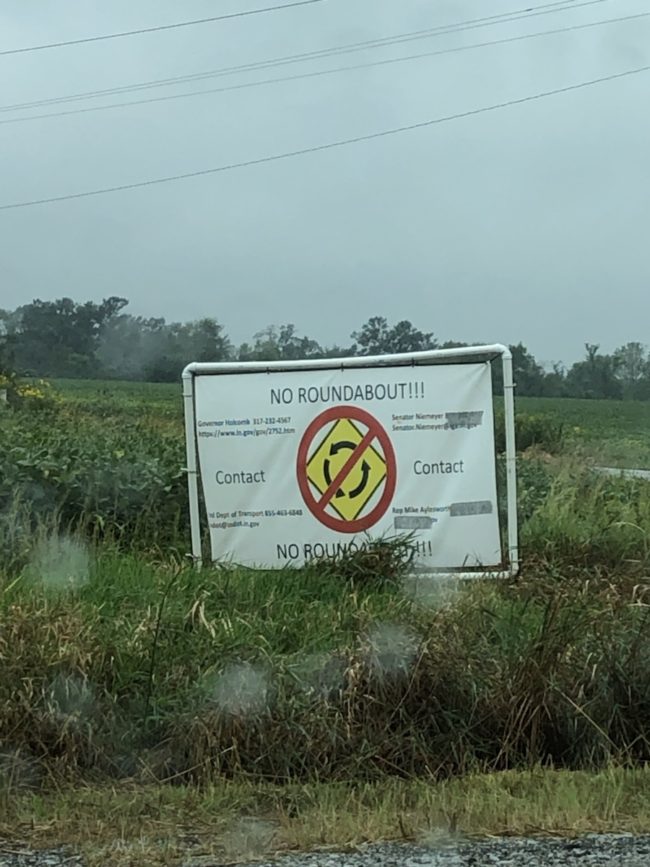
I will never understand that American motorist aversion to Roundabouts. For those unfamiliar with the concept, a Roundabout is an interchange with a circular median. Traffic entering the roundabout yields to the traffic already in the roundabout. Entry points into the roundabout are “channelized” to reduce the risk of someone turning the wrong way into the roundabout. The channelization also provides a safe location for pedestrians and cyclists to move through the intersection. There are no traffic lights.
Community knee-jerk reactions to an accident at a busy intersection is either on or a combination of two things: put up a traffic signal and/or lower the speed limit.
For the most part, motorists will naturally drive at the speed that “feels” appropriate for a roadway. When you design a highway for a 55 MPH design speed and then lower the speed limit to 30 MPH, motorists will still tend to drive 55 MPH. They will then slam on the brakes whenever they see something that resembles an officer of the law, which lends to erratic driving and creates the potential for an accident.
Anytime you stop traffic you are creating the potential for an accident. Traffic signals, especially ones located in relatively rural or semi-suburban areas, catch motorists off guard. And in today’s hurry, hurry, hurry environment, where everything and anything is expected now, drivers are running traffic lights more than ever. They see the light turn yellow and they gun it, trying to beat the light.
A roundabout is a traffic calming measure. Traffic keeps moving, but the design of the intersection moves that traffic at naturally slower, measured pace.
I suspect many American drivers are against the installation of roundabouts for two reasons: 1. they’re different and 2. they’re perceived as “un-American”. Roundabouts are much more prevalent in Europe and other parts of the world. State Departments of Transportation have only been building roundabouts for the past dozen or so years here in the United States. Well, since the beginning of the 21st century.
Some folks mix up Roundabouts with the higher speed Rotaries and Traffic Circle designs from the middle of the 20th century. These older designs are often larger than their modern replacement, have erratic practices for entry and exit, and manage traffic at a higher speed.
An added bonus of roundabouts is they’re more ecologically friendly. Traffic isn’t stopping and starting as much as at signalized intersections and no electricity is required to power the traffic signals. And on a side note, why haven’t we started converting our traffic signals to solar power?
The intersection in question is located in the northwestern corner of Indiana, not too far from the Illinois state line. A traffic light managed traffic at an intersection in the middle of corn fields, but there were several growing housing developments in the neighborhood. As a guy that went to school for Civil Engineering, I can tell you this particular location would probably be perfect for a roundabout.
State and other DOTs need to concentrate on education and other forms of public outreach. There is a decent chance that we could reduce accidents at intersections a bit if we continued to convert our intersections to this modern design.
